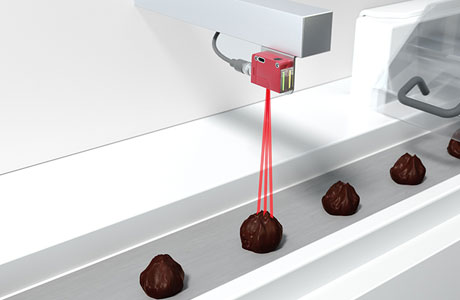Key Takeaway
The input voltage of a photoelectric sensor typically ranges from 10 to 30 volts DC, which is ideal for most low-voltage industrial applications. Some sensors can handle higher voltages, up to 240 volts AC, which are useful in applications involving heavy machinery or long-distance transmission.
It’s important to match the sensor’s input voltage with the system requirements to avoid malfunctions. Supplying incorrect voltage can lead to sensor damage or unreliable performance. Always check the manufacturer’s specifications before installation.
Standard Input Voltage Ranges for Photoelectric Sensors
The input voltage of photoelectric sensors typically ranges between 10 to 30 VDC (Volts of Direct Current). This wide range accommodates different industrial applications, ensuring flexibility and compatibility. Some sensors may support higher ranges, like 100 to 240 VAC, particularly in applications requiring more power. However, the most commonly used range is 10 to 30 VDC, suitable for most automation setups. Why is this range so standard? It’s because this voltage range offers an optimal balance between energy efficiency and performance, allowing the sensor to function reliably without consuming excessive power. Always refer to the manufacturer’s datasheet for the exact voltage range, as using a sensor outside its specified range could lead to failure.

How Input Voltage Affects Sensor Performance
When it comes to photoelectric sensors, input voltage is crucial. It’s not just about turning the device on; the correct voltage ensures it works efficiently and provides accurate readings. Too little voltage leads to instability, where the sensor might miss detections or shut down unexpectedly. Think about it—what good is a sensor if it fails to detect when you need it most? On the other hand, providing the sensor with too much voltage is equally harmful. Overvoltage can cause the sensor to overheat, potentially damaging its internal components. This is a serious issue because once the internal circuits are fried, the sensor becomes useless.
The key to maintaining a sensor’s longevity and performance lies in supplying the correct voltage. This ensures that both the transmitter and receiver inside the sensor communicate flawlessly, maintaining precise detection over time. In industrial automation, where every second counts, the last thing you want is a faulty sensor due to incorrect voltage. It could disrupt the entire process, leading to production delays and costly downtime. By simply ensuring proper voltage, you are extending the sensor’s lifespan and enhancing the overall efficiency of your system.
Matching Sensor Voltage to Application Requirements
Matching the input voltage of a sensor to your specific application isn’t just recommended—it’s essential. For instance, in heavy-duty environments where machines require more power, a sensor designed for higher voltages, like 240 VAC, might be the best fit. But for lighter tasks, a sensor that runs on 24 VDC will do the job without wasting energy. It’s all about understanding your system’s power supply and selecting the sensor that works best within those parameters. Doing so ensures that the sensor performs efficiently, and you’re not wasting energy or risking malfunction.
Moreover, understanding the power demands of your application allows you to make more informed choices when selecting a sensor. This not only enhances the sensor’s lifespan but also reduces the likelihood of unnecessary repairs or replacements. Overlooking these voltage requirements might seem small, but it can have a ripple effect on the entire system. The right voltage fit means better performance, longer sensor life, and fewer operational headaches down the line.
What Happens When Sensors Receive Incorrect Input Voltage?
Giving your sensor the wrong voltage can be disastrous. If the sensor is underpowered, you’ll quickly notice performance issues—missed detections, erratic behavior, and, in worst cases, a complete shutdown. In environments where precision is key, this kind of instability can lead to major production errors or even safety risks. When a sensor doesn’t function as expected, it not only impacts your equipment but can also jeopardize your entire operation. This is why getting the input voltage right is so important.
On the flip side, too much voltage brings its own set of dangers. Overvoltage can cause permanent damage to the sensor’s internal components, rendering it inoperable. And once that happens, you’re not just replacing a sensor—you may also face downtime or, worse, damage to other connected devices. To avoid this costly mistake, always double-check that the voltage you’re supplying matches the sensor’s specifications. This one simple step can save you a lot of time, money, and hassle in the long run.
Input Voltage Safety Tips for Long Sensor Life
To ensure a long and productive life for your sensors, paying attention to the input voltage is crucial. Here’s a simple rule: always cross-reference the voltage requirements in the sensor’s datasheet with your system’s power supply. If the two don’t match, you’re asking for trouble. Another helpful tip is to use voltage regulators, especially in environments where power fluctuations are common. These regulators can help stabilize the voltage, preventing potential damage from spikes or drops.
Another key safety measure is to monitor the system voltage regularly. Early detection of any abnormalities can prevent bigger issues from developing. Last but not least, ensure proper wiring and connections. A simple mistake in wiring can lead to short circuits, power surges, or sensor failure. By following these practical safety tips, you’ll extend your sensor’s lifespan and keep your operation running smoothly. The fewer unplanned downtimes you have, the better your entire system will perform.
Conclusion
The input voltage is the backbone of a photoelectric sensor’s performance. Whether you’re working in a complex industrial environment or a simple automation system, maintaining the correct voltage ensures that your sensors operate smoothly. Matching the voltage with the application’s requirements, and taking the necessary precautions to avoid voltage fluctuations, ensures not only the sensor’s longevity but also the system’s overall reliability. As a newly joined engineer, understanding the importance of input voltage will allow you to optimize your equipment and prevent unnecessary malfunctions, contributing to a smoother and more efficient production process.
